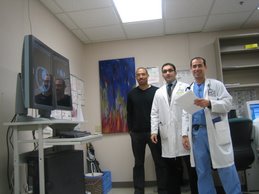

B12 deficiency
Sub acute combined degeneration
Case :66 yo female vegetarian with 6 month history off distal extremities parasthesia accompany by 4 month complaint of ataxia and memory loss.
HGB : 10.4 g/dL (11.2-15.2)
MCV : 117 Fl (78-100)
MCH : 41.7 pg(27.4-33.0)
Homocysteine total : 59 (4 to 14)
Methylmalonic Acid (pending)
RBC morphology : macrocyosis,Polychromasia,Anisocytosis
B12 : 190 pg/mL (211-911)
Folate : 20.6 ng/mL
Macrocytic anemi
Polymorph
Hypersegmented
neutrophiles
HGB : 10.4 g/dL (11.2-15.2)
MCV : 117 Fl (78-100)
MCH : 41.7 pg(27.4-33.0)
Homocysteine total : 59 (4 to 14)
Methylmalonic Acid (pending)
RBC morphology : macrocyosis,Polychromasia,Anisocytosis
B12 : 190 pg/mL (211-911)
Folate : 20.6 ng/mL
Macrocytic anemi
Polymorph
Hypersegmented
neutrophiles

Clinical Manifestation :
Hematologic
Neurologic
Neuropathy is symmetrical and affects the legs more than the arms.
It begins with paresthesias and ataxia associated with loss of vibration and position sense, and can progress to severe weakness, spasticity, clonus, paraplegia
Psychiatric disturbances, and dementia
Ischemic stroke
Optic neuropathy

Spongy or "vacuolar" degeneration of the spinal cord white matter
Management
4 injections of cyanocobalamin 1000 µg intramuscularly over 2 weeks.
In patients with pernicious anemia, monthly intramuscular injections of 1000 µg of cyanocobalamin
